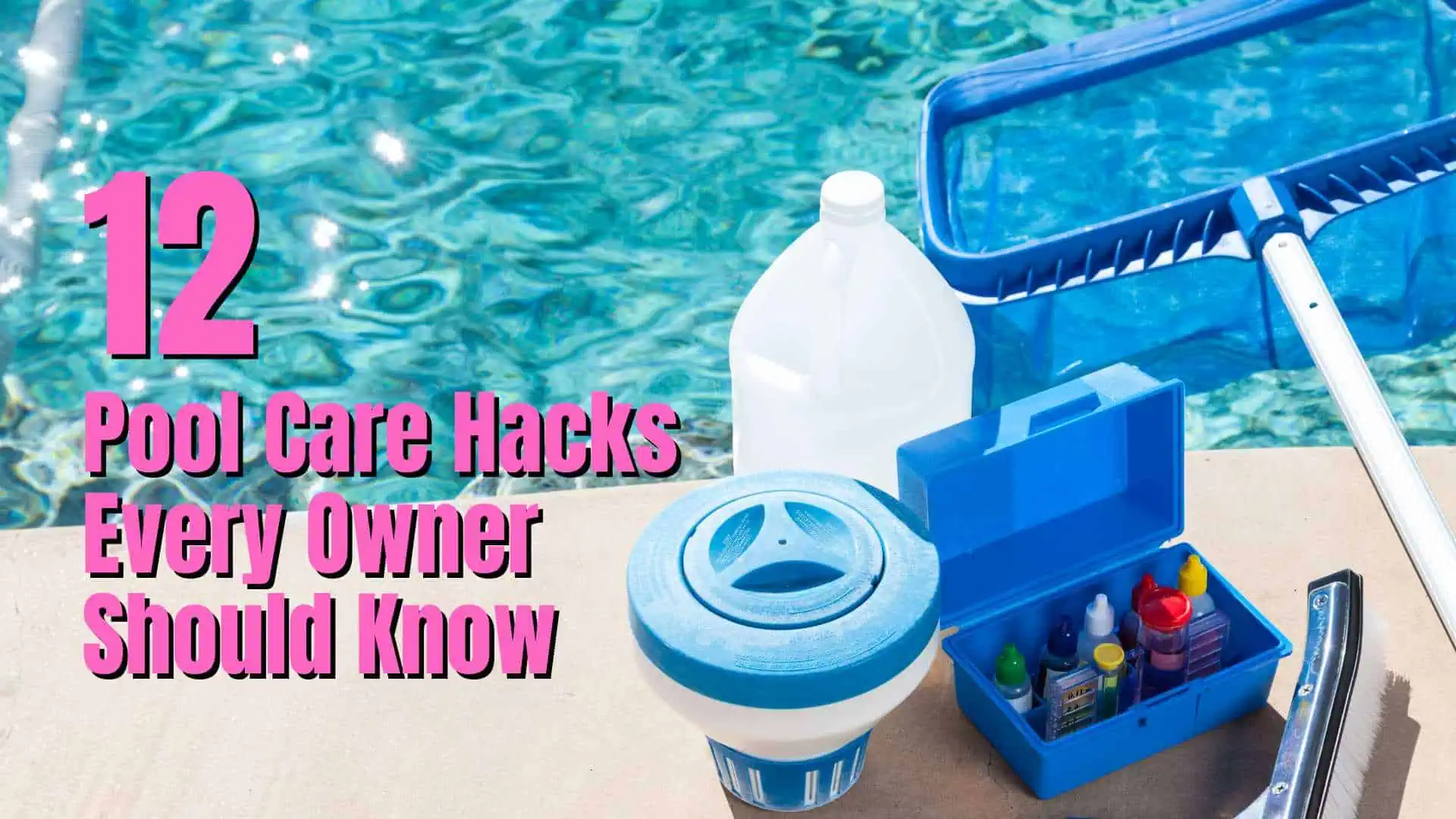Maintaining the proper pressure in your swimming pool filter system is key to pool maintenance. One of the essential tools to monitor and maintain this pressure is the pool filter pressure gauge, which measures the strength, or PSI (pounds per square inch), of the water flowing through your filter.
But what should the pool filter pressure gauge read? Every pool’s ideal reading will vary to some extent so knowing your filter’s baseline or normal range will help you ensure the pressure stays within a safe and efficient range.
Factors such as filter size, the age of your filter and how clean the filter is can all play a role in maintaining proper pressure. By keeping an eye on these aspects, you can extend the life of your filter, improve water quality, and enjoy your pool more thoroughly.
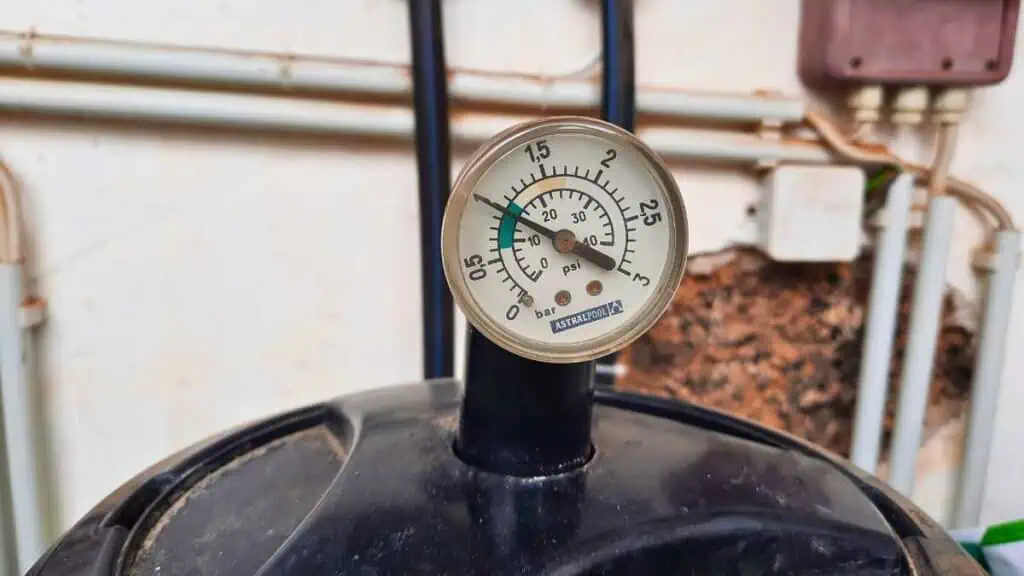
Key Takeaways
- Monitor your pool filter pressure gauge to maintain optimal performance
- Aim for a pressure reading between 10 and 25 psi, depending on your filter and pump specifics
- Pay attention to factors such as filter size, age, and pool equipment condition to maintain proper pressure
What Should Pressure Gauge Read on Pool Filter
A pool filter pressure gauge plays a crucial role in maintaining the health and cleanliness of your swimming pool. This little device measures the amount of pressure in your pool’s filtration system, providing you with valuable information in pounds per square inch (PSI).
When you read your pool filter pressure gauge, you’ll notice a dial with numbers around the perimeter and an indicator hand that moves up and down. Understanding what these pressure levels mean is essential to keep your pool in the best possible condition.
In general, a normal pool filter pressure reading ranges from 10 to 25 PSI. This is considered the optimal operating range for your swimming pool filter. It’s good to know your specific pool filter’s baseline PSI reading, as it can vary for different filters. To find this baseline, take the initial reading when you first install a clean filter and the pool system is running smoothly.
Now, it’s important to keep an eye on your pressure gauge for any significant changes. If the PSI reading goes up by 10 or more above the normal range, it signifies a high-pressure level, which may indicate that your filter is clogged or dirty. Backwashing or cleaning the filter is necessary in such cases to maintain efficient water flow and filtration.
On the other hand, if the PSI reading is 5 or more below the baseline, it indicates low pressure in the system. This can be a sign of a leak, pump blockage, or filtration system damage. In cases like these, inspecting the pump and plumbing for any issues and addressing them promptly is best.
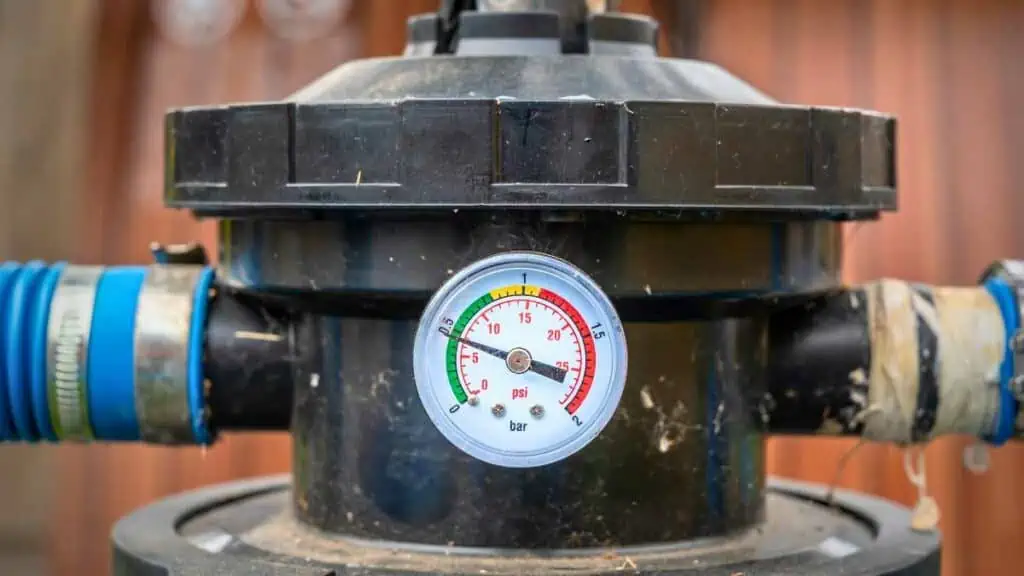
Understanding Normal, High and Low Pressure Readings
A pool filter pressure gauge is essential for monitoring your pool filter’s performance. Understanding what normal, high, and low-pressure readings look like and what they mean for your pool maintenance is crucial.
Normal Pressure Readings
The normal pressure range for a pool filter gauge is typically between 10 psi and 25 psi. This means that your pool filter is functioning efficiently, and water is flowing through it seamlessly with minimal resistance.
It’s a good idea to note your filter’s baseline pressure after a fresh filter cleaning or installation; this will be your reference point for future gauge readings.
High Pressure Readings
If your pool filter pressure gauge reads 10 psi or more above the normal range, you’re dealing with high pressure. High-pressure readings can indicate that your pool filter is becoming clogged with debris, or there might be an issue with the circulation system.
Some common causes of high pressure include:
- Sand filter needs backwashing
- Dirty or clogged filter cartridges
- Blocked return lines
- Closed or partially closed valves
To remedy high-pressure readings, first, try cleaning your filter. If this doesn’t help, inspect other parts of your pool system for potential issues.
Low Pressure Readings
On the other hand, if your pool filter pressure gauge reads 5 psi or more below the baseline, you’ve got low pressure. Low-pressure readings can signify that your pump is not working efficiently or there’s a leak in the circulation system.
Common causes for low pressure are:
- Leaky suction lines
- Worn impellers in the pump
- Low water levels in the pool
To address low-pressure readings, check for suction leaks and ensure your pump functions correctly. Make sure your pool’s water level is above the skimmer opening to maintain proper flow.
No Pressure Reading
This is not uncommon when the pool pump starts as there is probably air in the system. After a few minutes, the air will probably clear and the pressure will rise.
If it doesn’t then there are two main things it could be:
- It could be air trapped in the filter housing. This is easy to resolve by locating the air relief valve which will probably be behind the pressure gauge. Turn the knob to open the valve. If water immediately comes out of the valve then you have no air trapped so retighten the knob. If you hear air coming out, keep it open until the air stops and water comes out.
- You could have an airlock in the pool pump. There are a few ways to get rid of an airlock and prime the pool pump which I have covered fully in my post.
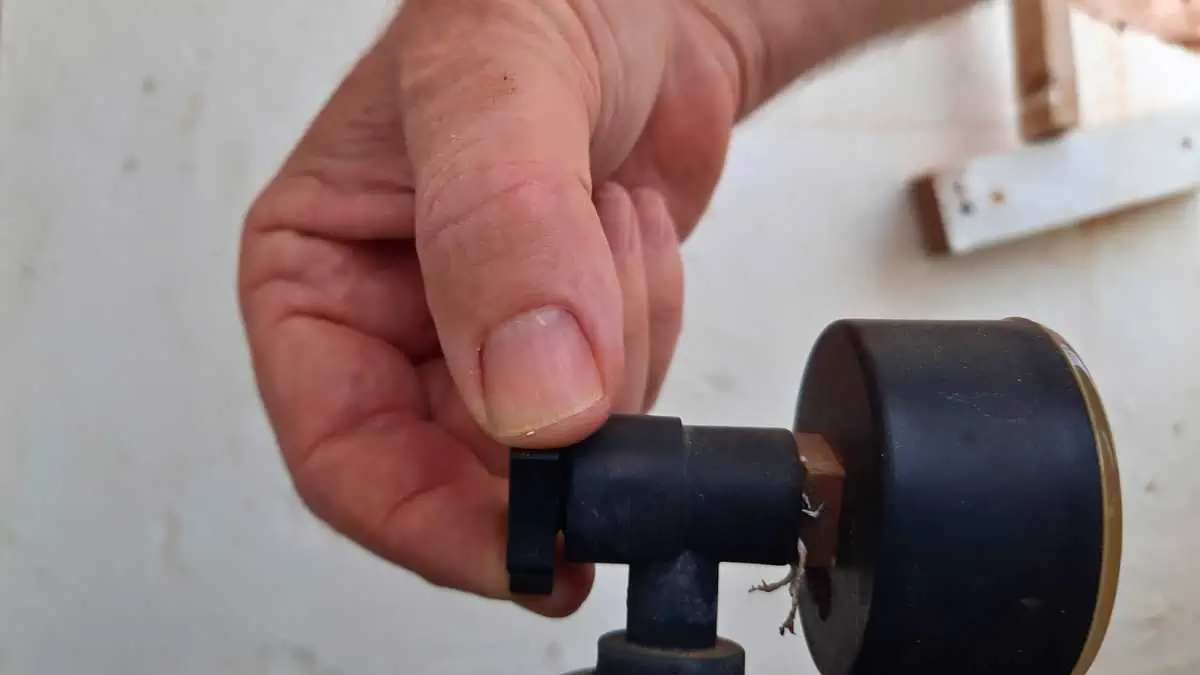
Pool Care Handbook and Video Course
When I bought my house with a swimming pool, I knew absolutely nothing about pool care. I just winged it for a while, making many mistakes along the way.
Fortunately, I was recommended Swim University’s Pool Care Handbook and Video Course. I bought it and it was an absolute game-changer.
It was the best money I spent that year. I learned everything from basic cleaning to advanced troubleshooting. Swim University offers a no-quibble refund policy too so what do you have to lose?
Potential Causes of Pressure Problems
The following could be affecting the pressure in your filter:
- One of the common causes of pressure problems in your pool filter gauge is a clogged or dirty filter. When debris accumulates, it can obstruct the flow of water, leading to an increase in pressure. To address this issue, you can clean or replace the filter cartridges or perform a backwash if your system uses a sand filter.
- Low water levels can also lead to pressure problems. When your pool’s water level drops below the skimmer, air can get sucked into the pump instead of water. This can result in a fluctuation of pressure readings. Ensure that your pool has the proper water level to keep the system functioning correctly.
- The pump and skimmer baskets are crucial in maintaining the pool filter pressure gauge reading. If either are clogged with debris, it may cause potential problems with the pressure reading. To fix this, regularly check and clean out the baskets to improve water flow to the pump and filter system.
- Another possible issue with your pool filter pressure gauge comes from a malfunctioning filter tank. If there’s a crack or other damage to the filter tank, it can cause pressure problems. Inspecting the filter tank to identify any faults or damage is essential.
- Air trapped in the filter can also lead to pressure issues. The air bleeder assembly and air release valve are designed to eliminate air from the filter system. Ensure these components function correctly by checking them for clogs or leaks.
Importance of Proper Filter Size
Having the right filter size for your pool is essential for maintaining water quality and the efficiency of your pool’s circulation system.
A properly sized pool filter ensures that water is filtered and circulated effectively, keeping it clean and free of debris. It also helps maintain the appropriate pressure levels as indicated by your pool filter’s pressure gauge.
When it comes to choosing the right filter size, your pool’s volume plays a major role. Determining the correct size of the filter ensures that the water is circulated and filtered efficiently. For instance, a small filter system may struggle to handle the water capacity of a large pool, leading to poor filtration and even damage to your pool’s equipment.
Pool filter systems come in various types, including sand filters, cartridge filters, and diatomaceous earth (DE) filters. Each type has its own requirements and specifications when it comes to choosing the right size.
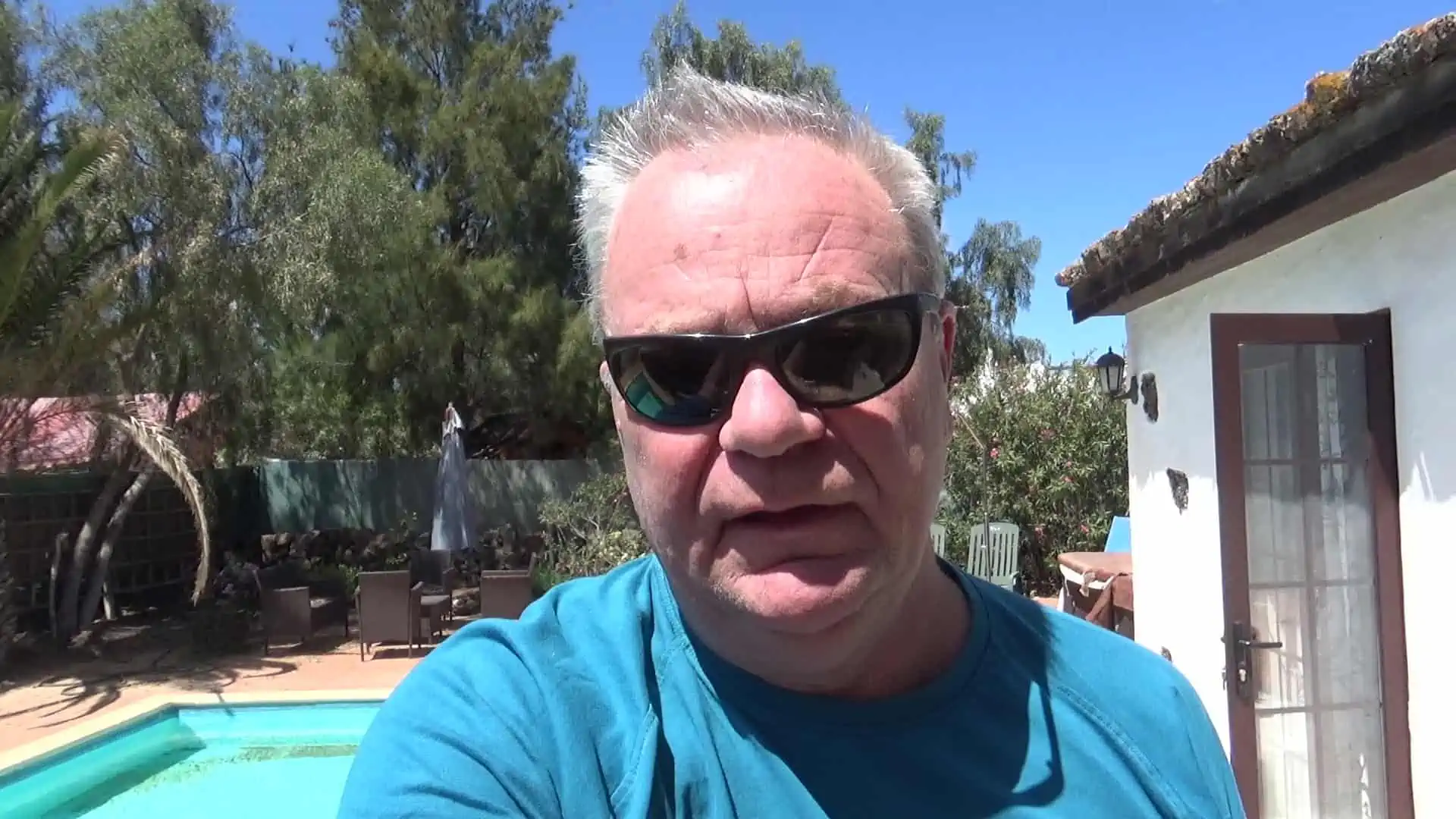
I have had hot tubs for over 20 years and a pool for the last 10 years. I had to learn how to clean, maintain and fix them the hard way. Since then I have helped many friends and neighbors with their pools and now I want to share everything I have learned with you. About Me


